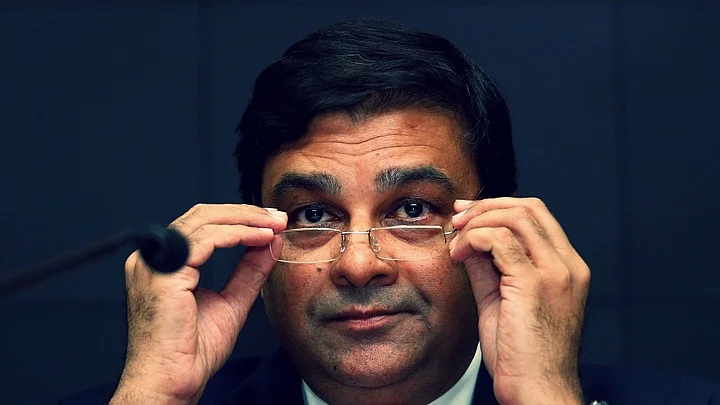The Reserve Bank of India announced on Wednesday, 6 December, that it would keep its key policy rates unchanged and hold a neutral stance. This was hardly surprising and anticipated by both markets and economists.
Nevertheless, the decision to maintain a status quo must have been far from easy. The Monetary Policy Committee is performing a tough balancing act, continuously reassessing the trade-off between supporting India’s fragile economic recovery and containing the risk of fast-rising inflation. The pressure on the RBI to cut rates had been rising after five consecutive quarters of slowing growth.
Ashima Goyal, one of Prime Minister Modi’s advisors, recently even stated that the RBI has a track record of overestimating inflation and, hence, keeping monetary policy too tight.
At the same time, given the upside inflation risks, the RBI has good reason to be reluctant to cut rates. Oil prices have been rising fast, which does not bode well for the price stability of net oil importers, such as India.
Brent is sold for $63.60 per barrel now, up from $44.80 at the start of the summer. Moreover, government wages and housing rent allowances are picking up.
Higher freight costs are expected to put additional pressure on food prices in Asia, which were already expected to normalise from the very subdued levels seen earlier this year. Lastly, a faster-than-anticipated tightening cycle by the US Federal Reserve or the European Central Bank could also lead to additional inflationary pressure in India. Given the problematic trade-off faced by the RBI, last week’s release of India’s gross domestic product growth for the second fiscal quarter of 6.3 percent, which showed a sharp rebound from 5.7 percent in the previous quarter, must have been a big relief for Governor Urjit Patel and the rest of the MPC.
But the RBI’s balancing act is far from over, which might explain why it is not keen to elaborate on its future policy decisions.
When asked at the press conference what the RBI will do should economic growth disappoint in the next few quarters, Governor Patel mentioned that the RBI’s neutral stance means that it will closely monitor data flows in the coming months and quarters, which will determine the RBI’s decisions. “All possibilities are on the table.”
This pretty vague answer is a good example of how markets are kept in the dark on future policy steps.
The lack of information on the RBI’s medium-term trajectory might even clarify the peculiar result of a recent Bloomberg survey among 46 economists, which showed that the repo rate is expected to be rock solid at 6 percent until April-June 2019, despite increasing inflationary pressures.
The question is whether we can get ‘inside the head of the RBI’ to improve our understanding of the MPC’s future rate decisions.
Flexible inflation targeting (FIT) is a brand new concept in India, so we don’t have much empirical data to work with. What is available is the analytical FIT framework, which has been published by the RBI last year.
However, it is not useful to reproduce this complicated system of equations without substantially increasing the margin of forecasting errors. This is, even more, the case as we lack information on the RBI’s forecasts of key exogenous variables, such as the output gap, agricultural output, and foreign price developments.
As an alternative, we have combined two simple well-known economic concepts: the Taylor Rule and the Phillips Curve. When we integrate both concepts, we get the results shown below.

The upper bound forecast is based on a tighter impulse-response feedback loop between inflation and repo rates than the lower bound forecast.
In our opinion the upper bound model produces more accurate forecasts, whereas the lower bound is based on a more robust econometric model.
The upper bound suggests that the RBI will start hiking rates in the April-June quarter of 2018, as inflation rises due to a narrowing output gap, higher global inflation and increasing commodity prices, such as oil. The RBI will then continue to raise rates until it reaches 7.25 percent in April-June 2019.
In our forecast, inflation will only slightly breach the 6 percent upper band
The RBI will have to start hiking again in 2021 to keep inflation below the 6 percent band. In the lower bound forecast, the RBI starts hiking rates in April-June 2019 and follows a more gradual step-by-step approach. Ultimately, the repo rate is kept stable on 7 percent from July-September 2020 onward.
Even in our lower bound forecast, we are more hawkish in our expectations than the results from the Bloomberg survey mentioned earlier.

Of course, our exercise is a very simplified way of forecasting inflation and repo rates, but it does provide some guidance given the expected underlying dynamics of the Indian economy.
It might be worthwhile for the RBI to examine whether it is useful to communicate medium-term forecasts on these variables in a similar fashion, while stressing at the same time that it needs the flexibility to deviate from these forecasts.
This would not only strengthen external transparency, but could also ease some of the pressure the RBI has been facing lately to defend its rates decisions.
What the RBI Should Do, but Won’t

(This article was first published on BloombergQuint. Hugo Erken is a senior economist at RaboResearch Global Economics & Markets. The views expressed here are those of the author’s and do not represent the views of BloombergQuint or The Quint. )
(At The Quint, we question everything. Play an active role in shaping our journalism by becoming a member today.)



